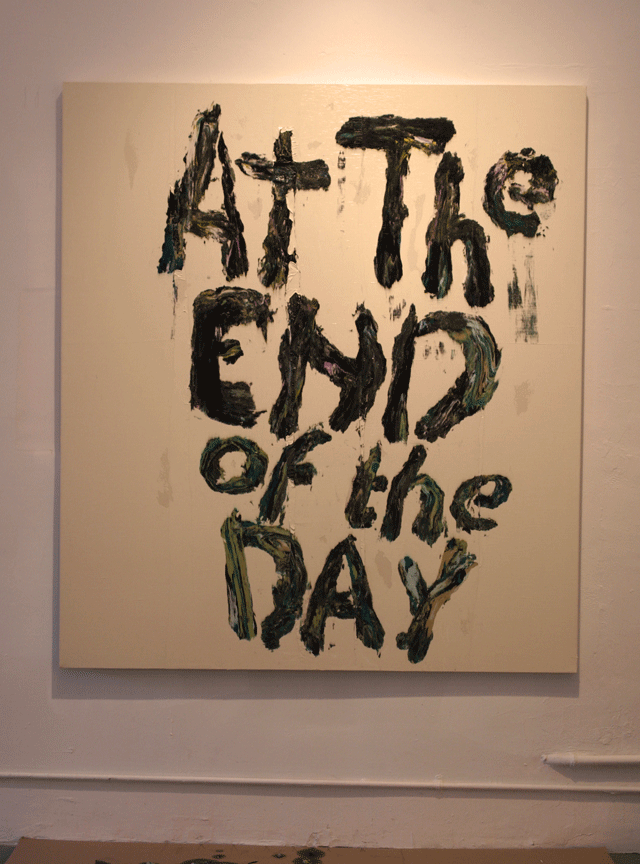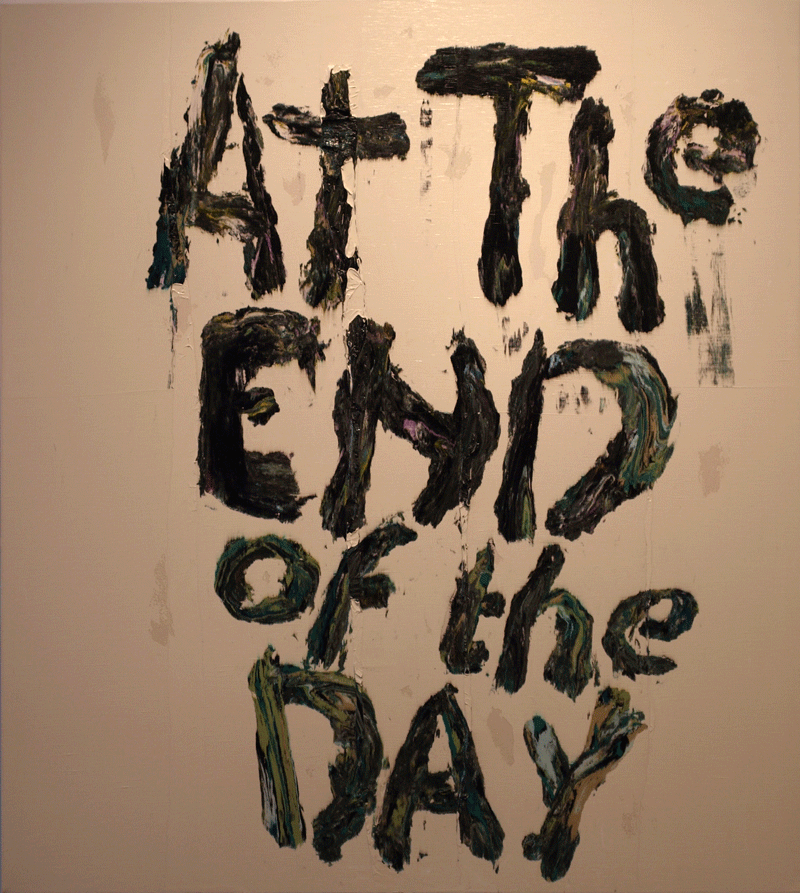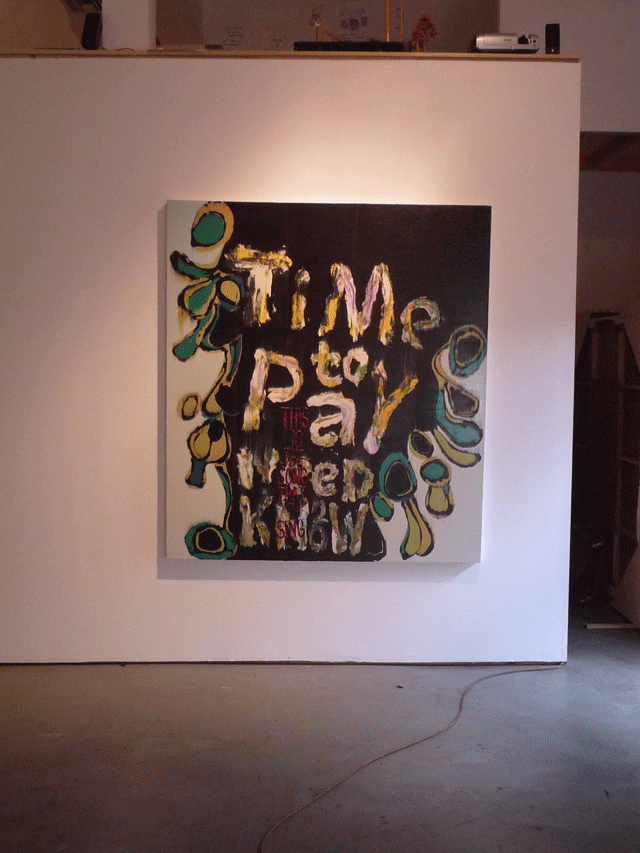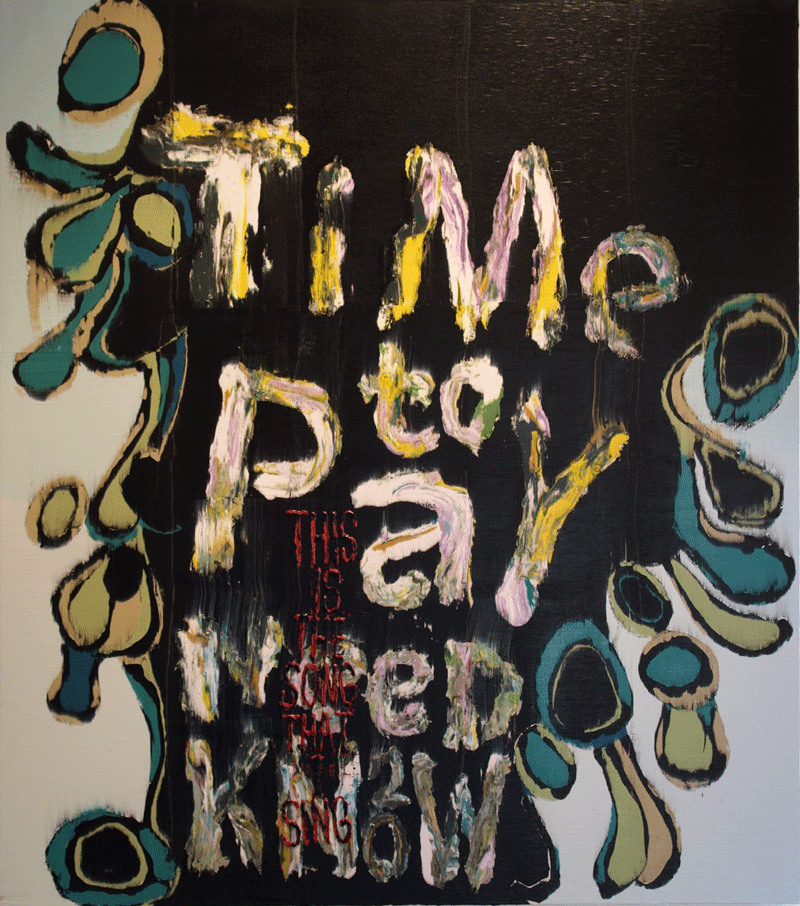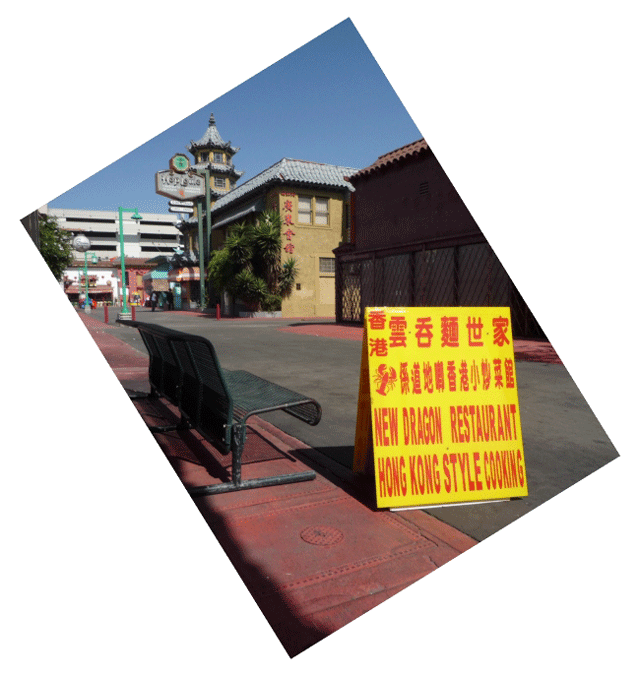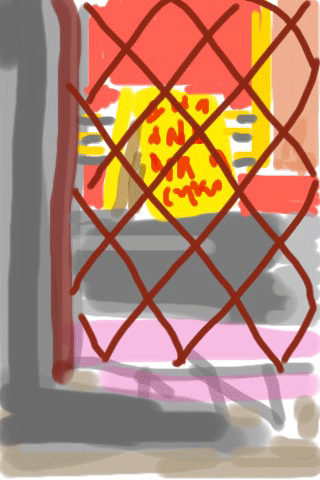October 29, 2009
Gift of Honor

(Fascinating reading, about fighting the Taliban from a tribal context.)
October 26, 2009
Bernard Henri-Lev
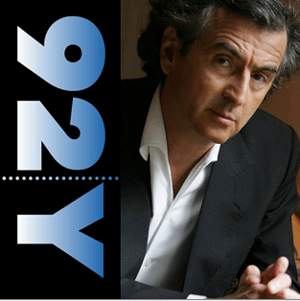
An interesting interview of Bernard-Henri L?vy With Sam Tanenhaus at NYC's 92Y, available as a book download from iTunes.
October 24, 2009
Opening Tonight: WPA
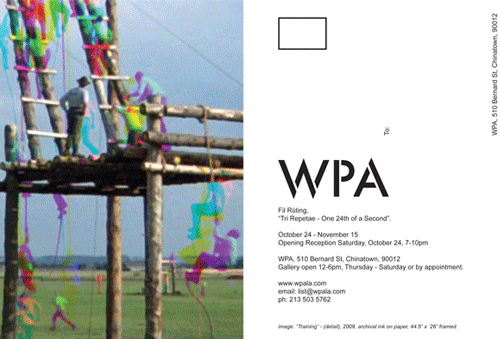
I'll be attending Fil R?ting's opening tonight at WPA in ChinaTown:
Fil R?ting
Tri Repetae - One 24th of a Second
WPA, 510 Bernard St, October 24 - November 15
Opening Reception Saturday, October 24, 7-10pm
Special Guest Band @ 10pm
WPA is pleased to announce an exhibition of new work by Fil R?ting,
"Tri Repetae - One 24th of a Second".
*Trichromacy, the condition upon which humans perceive color, is a fundamental exploration point in "Tri Repetae". Sampled from iconic film, the videos and prints in this exhibition contain ghost like figures in shades of red, green, blue, moving within a stationary camera space such as a hallway, trash heap, or skate park. These images hint at a sublime subtext within the original sampled narrative releasing the imagery from the restraints of its linear form, by continuously cutting the frame in overlapping time.?One 24th of a second is the time in which a single frame of film is seen; these prints as single frames however implicate the multiple frames found in cinematic film. This literal liberation of image and sound from the formal and conceptual constraints of historical linear filmic space succeeds predominantly though this direct relationship to time. Time is represented as historical form, context, and idea. R?ting?s playful reconstructive approach to sampled cinematic imagery implies a sort of visual haiku; instead of three lines of text, we have three colors, three compositions? a tri repetae.
Born in Sydney, Australia, Fil R?ting now lives and works in Los Angeles.
*The human eye contains three types of color receptors (cones), with different absorption spectra. The RGB (red, green, blue) additive color model used in video and other electronic devices, was derived from this trichromatic perception of color.
Gallery open 12-6pm, Thursday - Sunday or by appointment.
WPA | 510 Bernard Street Los Angeles, CA 90012 | +1 213-503-5762
October 22, 2009
Wings

Recently there have been a few articles that have popped up into the limelight about the state of Conceptual art and Theory with Dennis Dutton making a strong assertion backed by a weak argument in Has Conceptual Art Jumped the Shark Tank? and Robert Storr chumming up the water with Most theory has little bearing on art.
The central problem for our (art) world is schizophrenic. Left and Right... Theory and Practice, to bridge the list. We have (over) developed one of our wings as we denied the existence of the-our other, a huge mistake in my opinion. The strength of each wing develops from the struggle against the other. With two, one can fly. With only a single wing, one can only flap in circles.
The whole modern world has divided itself into Conservatives and Progressives. The business of Progressives is to go on making mistakes. The business of the Conservatives is to prevent the mistakes from being corrected.I bumped into G. K. Chesterton recently and it is in his Orthodoxy that I found a brilliant counterargument written in 1908, something I find relevant to this day. It is difficult to excerpt, these are a few paragraphs taken early in his book:
Let us begin, then, with the mad-house; from this evil and fantastic
inn let us set forth on our intellectual journey.
Now, if we are(Emphasis Mine)
to glance at the philosophy of sanity, the first thing to do in the
matter is to blot out one big and common mistake. There is a notion
adrift everywhere that imagination, especially mystical imagination,
is dangerous to man's mental balance. Poets are commonly spoken of as
psychologically unreliable; and generally there is a vague association
between wreathing laurels in your hair and sticking straws in it.
Facts and history utterly contradict this view. Most of the very
great poets have been not only sane, but extremely business-like;
and if Shakespeare ever really held horses, it was because he was much
the safest man to hold them. Imagination does not breed insanity.
Exactly what does breed insanity is reason. Poets do not go mad;
but chess-players do. Mathematicians go mad, and cashiers;
but creative artists very seldom. I am not, as will be seen,
in any sense attacking logic: I only say that this danger does
lie in logic, not in imagination. Artistic paternity is as
wholesome as physical paternity. Moreover, it is worthy of remark
that when a poet really was morbid it was commonly because he had
some weak spot of rationality on his brain. Poe, for instance,
really was morbid; not because he was poetical, but because he
was specially analytical. Even chess was too poetical for him;
he disliked chess because it was full of knights and castles,
like a poem. He avowedly preferred the black discs of draughts,
because they were more like the mere black dots on a diagram.
Perhaps the strongest case of all is this: that only one great English
poet went mad, Cowper. And he was definitely driven mad by logic,
by the ugly and alien logic of predestination. Poetry was not
the disease, but the medicine; poetry partly kept him in health.
He could sometimes forget the red and thirsty hell to which his
hideous necessitarianism dragged him among the wide waters and
the white flat lilies of the Ouse. He was damned by John Calvin;
he was almost saved by John Gilpin. Everywhere we see that men
do not go mad by dreaming. Critics are much madder than poets.
Homer is complete and calm enough; it is his critics who tear him
into extravagant tatters. Shakespeare is quite himself; it is only
some of his critics who have discovered that he was somebody else.
And though St. John the Evangelist saw many strange monsters in
his vision, he saw no creature so wild as one of his own commentators.
The general fact is simple. Poetry is sane because it floats
easily in an infinite sea; reason seeks to cross the infinite sea,
and so make it finite. The result is mental exhaustion,
like the physical exhaustion of Mr. Holbein. To accept everything
is an exercise, to understand everything a strain. The poet only
desires exaltation and expansion, a world to stretch himself in.
The poet only asks to get his head into the heavens. It is the logician
who seeks to get the heavens into his head. And it is his head
that splits.
I don't know enough about Chesterton to say that he was arguing for one wing over the other, despite this, his polarization of the poet and logician. But here I am arguing for both in our art world, for one winged aspect to strengthen the other, a bit of madness of the logician to aid the common sense of the poet (and visa versa)... in Chesterton's terms.
It's an amazing argument. I have to excerpt more:The last thing that can be said of a lunatic is that his actionsUPDATE:
are causeless. If any human acts may loosely be called causeless,
they are the minor acts of a healthy man; whistling as he walks;
slashing the grass with a stick; kicking his heels or rubbing
his hands. It is the happy man who does the useless things;
the sick man is not strong enough to be idle. It is exactly such
careless and causeless actions that the madman could never understand;
for the madman (like the determinist) generally sees too much cause
in everything. The madman would read a conspiratorial significance
into those empty activities. He would think that the lopping
of the grass was an attack on private property. He would think
that the kicking of the heels was a signal to an accomplice.
If the madman could for an instant become careless, he would
become sane. Every one who has had the misfortune to talk with people
in the heart or on the edge of mental disorder, knows that their
most sinister quality is a horrible clarity of detail; a connecting
of one thing with another in a map more elaborate than a maze.
If you argue with a madman, it is extremely probable that you will
get the worst of it; for in many ways his mind moves all the quicker
for not being delayed by the things that go with good judgment.
He is not hampered by a sense of humour or by charity, or by the dumb
certainties of experience. He is the more logical for losing certain
sane affections. Indeed, the common phrase for insanity is in this
respect a misleading one. The madman is not the man who has lost
his reason. The madman is the man who has lost everything except
his reason.
While scanning the comments of Ed Winkleman's blogpost Thinking While Making Things : Open Thread, James Elkins mentions an anthology written by grad students that he is editing:
So my contribution, to the various senses of "theory" and "Theory" that are being floated here, is a question: how many artists or scholars do you know who read theory, think about it, and then do something -- write a scholarly text, make an artwork -- that critiques the theorist? Some art is different from some theory; that might not be a productive way in to this material. But I would be interested to know what people consider to be work that demonstrates productive engagement with theory, as opposed to work influenced by theory, or work that is an instance of theory.
In his introduction to the anthology, he prescribes five positions prescriptions and three counter-positions proscriptions. Here they are in reverse order:
-1. No images in this book simply illustrate the surrounding argument.
-2. No images in this book exemplify the framing argument, showing how a given theory works in visual art.
-3. No image in this book will primarily function as a mnemonic.
1. Images as intelligent theories.
2. Images as mistaken theories.
3. Images as interruptions.
4. Images as things that remind us of argument.
5. Images as things that slow argument.
He finishes his introduction with a cautionary note:
These five positions and their three counter-positions amount to a theory of the place of images in critical thought. This book is intended as an answer to the text-driven, text-centered corpus of visual studies, and as an accumulation of instances of what we are calling visual argument. It may seem that this list of four positions omits one that is crucial to any account of how images create meaning: the claim that images alone can comprise an argument. We are skeptical about this. Buck-Morss has said that Dreamworld and Catastrophe (2000) began with images, which had their own argument, and similar things have been claimed, implicity, by many books that avoid texts. In twentieth-century art history there is Horst Janson's nearly textless Key Monuments of the History of Art (1959), a pedagogic tool that is nevertheless intended to embody a standard Western narrative of art history. Outside of art history there is also Andr? Malraux's Mus?e Imaginaire (1947-1950), with its mixture of surrealist and historicist examples intended to produce a meaningful experience. In more recent history there are wordless graphic novels, from the Weimar Republic to artists such as Chris Ware and Yuichi Yokoyama. In the West the tradition of wordless books is centuries-old, and includes such eccentric examples as the early eighteenth-century Mutus Liber (ed. Jean Laplace, 1979), a deliberately obscure set of pictorial instructions for alchemical operations. In this long and heterogeneous history there are few examples of sets of images that can be read as possessing clear arguments aside from conventional narratives. The claim that the arguments in a book began as collections of images is plausible and common (it is made implicitly in Benjamin's Arcades Project and explicitly by Buck-Morss), but the claim that images can stand in place of arguments remains problematic.
****
There comes a point where after following closely the argument of the logician -at times complicated, turgid, ornate, deranged, labyrinthine, and sometimes outright deceptive- the best thing to do is to close one's eyes to the line of the argument for a moment and listen to the song being sung, to pay attention to the method of their madness.
October 21, 2009
October 19, 2009
A Little Bit of Beuys in the Morning

Adam and I were talking about Beuys' "I Like America and America Likes Me, 1974".
What was he talking about, in those rambling chalkboard performances (?), we asked each other. America must have been the coyote. What's up with coyotes? How much of his work was program and how much of it was poetry?
Or were they one and the same?

(Image Source.)
The web at our fingertips, we consulted Wikipedia.
Are coyotes specific to the Americas? It turns out that there are various forms of jackals, related yet sufficiently different in terms of species.
As it turns out:
Beuys often created a score or "partitur" (as opposed to a script) in which he would plan the objects that would be used and the sequence of the performance. Beuys viewed each action as a new version of a basic theme and an attempt to make his philosophy more comprehensible. He also believed that the less literal the performances were, the easier it would be for the audience members to translate his message into their own lives.Beuys traveled to the United States in 1974 and performed an action entitled I like America and America Likes Me at the Ren? Block Gallery in New York. The action actually began at Kennedy Airport, where friends wrapped him in felt and transported him to the gallery in an ambulance. Beuys then spent several days in a room with only a felt blanket, a flashlight, a cane that looked like a shepherd's staff, copies of the Wall Street Journal (which were delivered daily), and a live coyote. His choice of employing a coyote was perhaps an acknowledgment of an animal that holds great spiritual significance for Native Americans, or a commentary on a country that through its Western expansion had become "lost" America.
Typical, for conventional wisdom of the era.
We then drop the great artist's name into YouTube...
That was funny, funny, funny.
What was he singing about?
A translation of the song follows: The research continues... (Via BabelFish)
October 15, 2009
Ahora


Film crews were shooting an episode of a television program called Fast Forward outside of the studio. Henry Taylor and I sat at the door and took it all in as the sun set. He was a marvel as he baited and flirted with the folks going about their work.
October 11, 2009
October 9, 2009
Lolita

Audio books, I love them.
After reading so much about Polanski in the news, after wrestling with a bloated blogpost that tries to chain our latent suicidal tendency, the nature of art and its integral connection to freedom... I bought Jeremy Irons' rendition of Nabokov's Lolita to get a closer look at Humbert Humbert.
The language and construction is wonderful. Reflexively, I jotted down a phrase or two when I could, wanting to linger, wanting to savor Nabokov's art:
Look, at this tangle of thorns.
***
You can always count on a murderer for a fancy prose style.
***
The beast and the beautiful merge at that point.
***
Oh, softly on go nightmares.
***
The heart is hysterical, unreliable organ.
***
The moral sense in mortals is the duty we have to pay on the mortal sense of beauty.
***
You have to be an artist and a mad man.
A creature of infinite melancholy
With a bubble of hot poison in your loins
And a super voluptuous flame
Permanently aglow in your supple (subtle?) spine.
Oh, how you have to cringe and hide
In order to discern at once by ineffable signs.
The subtle female outline of a cheekbone.
The slenderness of a downey limb.
And other indices which despair and shame
And tears of tenderness forbid me to tabulate.
(With apologies for faults in transcription and willfully transforming the audio in the last entry familiar -to me- "poetic form", surely it is grotesque. Such are the excesses of fanhood.)
